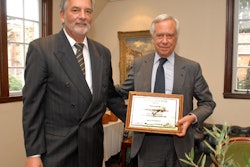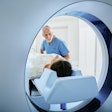Dear Molecular Imaging Insider,
Clinicians increasingly are expanding their use of PET/MRI to diagnose and assess a variety of conditions and diseases. The modality's advantage, of course, is its combination of anatomic and metabolic information.
The latest example of the hybrid modality's benefit comes from the U.K., where researchers are recommending the use of PET/MRI to assess suspected cases of cardiac sarcoidosis. They are using late gadolinium enhancement and FDG uptake as the key indicators to help identify patients who are at greatest risk of death, arrhythmia, and heart failure, as well as disease activity and a patient's prognosis.
Speaking of hybrid modalities, an international research team is reporting continued progress with its plan to develop a total-body PET/CT scanner designed to image patients in less than one minute. The key component of the work-in-progress Explorer is the half-million PET detectors that line the entire PET camera bore.
The smallest particle sometimes can provide a great result. One German radiologist is utilizing superparamagnetic iron oxide (SPIO) to boost the detection of small lesions in the liver and prostate and also hasten the imaging process. SPIO is showing it has potential in imaging anatomical, cellular, and molecular changes, as well as assisting in interventional procedures.
With the help of PET imaging, researchers at the University of Cambridge believe they have confirmed the process by which tau proteins spread in the brain to advance Alzheimer's disease. The theory is that beta amyloid occurs first, which encourages the appearance and spread of tau and destroys nerve cells, thus leading to cognitive and memory problems.
Finally, a research team from Sweden and the U.S. has now estimated the lifetime attributable risk of cancer for patients of various ages and genders undergoing a range of nuclear medicine procedures. For patients who are exposed to ionizing radiation during diagnostic or therapeutic nuclear medicine examinations, the benefits of such procedures almost always far outweigh the radiation risks, but it's important to understand the risk of cancer induction for such patients.
Make the Molecular Imaging Community part of your daily routine to see the latest news and novel research from Europe and around the world.



















